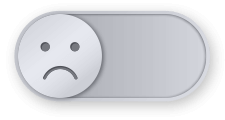FAQ
Integration
Integration Support
What is a pingback?
When a user makes a payment or completes an advertising offer via Offerwall, we send you an HTTP/HTTPS server-to-server notification communicating their user id and the details of the purchase. We call this notification a pingback.
Once you receive a pingback from Paymentwall, you will need to deliver the purchased product (or virtual currency) to the respective user. For this you will need to build a pingback listener script on your server. You should input the URL of this script (Pingback URL) in the Pingback section of your Project Settings inside of your Paymentwall Merchant Account.
Follow the guidelines for the Pingback URL samples script (based on API type):
Digital Goods
Virtual Currency
How can I set up a pingback?
You can refer to the Getting Started page for instructions on how to set up a pingback. You may also check our Digital Goods, Virtual Currency, or Cart APIs' pages for details on the Pingback API format. Upon receiving a pingback and processing the order on your side, we also recommend implementing the Delivery Confirmation API so that Paymentwall can track the order status (in case of non-instant delivery) and update users in case they inquire about the payment status and so that Paymentwall can dispute possible chargebacks.
How can I add custom pingback parameters?
You can set up custom pingback parameters in My Projects > Settings > Custom Pingback Parameters section. Any custom parameters can be added by specifying their name and value.
For elaborate instructions, check out the pingback parameters page.
What is the difference between HTTP and Email Pingback?
HTTP request is sent from our servers to your Pingback listener script where we communicate to your server the details about the payment so that your server can process the pingback and deliver the product or virtual currency to the according user automatically.
With Email Pingback an email is sent to the address that you configure once a user pays or completes an offer. Once you receive the email, you should deliver the product manually to the user.
Note: We highly recommend using HTTP Pingback for automatic processing of orders.
Which shopping cart plugins does Paymentwall support?
We have plugins for several shopping carts, and we continuously add more, including:
- WordPress
- Enjin/Buycraft
- PrestaShop
- WHMCS
- OpenCart
- Magento
- CS-Cart
- Drupal, Ubercart
- Typo3
Check out our shopping cart plugins page for the full list of integrations
If you do not see a plugin you use on our list, please email us at devsupport@paymentwall.com so we will add your preferred shopping cart plugin.
How can I use Paymentwall on my mobile applications?
Paymentwall has several software development kits (SDKs) that can easily be integrated into your existing mobile app allowing users to easily make purchases:
Brick Android SDK
Brick iOS SDK
Mobiamo Android SDK
Mobiamo iOS SDK
PWLocal Android SDK
PWLocal iOS SDK
You can check out our mobile SDKs page and start integrating them

